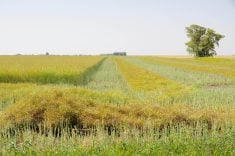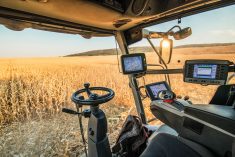Producers who choose to burn crop residue are reminded that authorization is required to burn crop residue between Aug. 1 and Nov. 15. Authorizations are issued daily by 11 a.m. based on weather, moisture and favourable smoke dispersion conditions, Manitoba Agriculture, Food and Rural Initiatives says in a release.
Night burning is banned year round.
Burning permits may be required for non-authorized rural municipalities. Permit application forms and information are available by calling the toll-free information line at 1-800-265-1233. Service is available in French and English. Information is also available from MAFRI GO offices and on the Internet under Manitoba Crop Residue Burning Program at www.gov.mb.ca/agriculture/soilwater/soil/fbd09s00.html.
Read Also

Manitoba sclerotinia picture mixed for 2025
Variations in weather and crop development in this year’s Manitoba canola fields make blanket sclerotinia outlooks hard to pin down
The department said producers should consider alternative uses for crop residue. Through the Growing Forward program, incentives have been established to encourage farmers to move away from the practice of stubble burning.
Many producers already use alternative methods of dealing with crop residue such as chopping and spreading the straw or listing straw they have for sale on the Manitoba Hay Listing Service. More information on these and other alternative methods of dealing with crop residue is available at www.gov.mb.ca/agriculture/soilwater/soil/fbd09s07.html.
Manitoba’s controlled burning program is part of the Burning of Crop Residue and Non-Crop Herbage Regulation. The program was introduced to protect public health and safety while allowing farmers to deal with difficult straw management problems.
Stubble burning regulations are enforced by environment officers and the RCMP. Failure to follow the regulations could result in fines of up to $50,000.


















